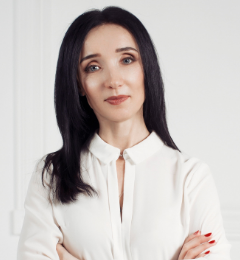 Svetlana Parkhomenko
Svetlana Parkhomenko
In the construction industry, the latest technologies are increasingly being introduced, which allow raising the design, construction and operation of buildings and structures to a new level. Head of the BIM technology department at Metropolis Svetlana Parkhomenko told L'économika about the opportunities that BIM technologies provide to designers.
- How long ago did Metropolis start using BIM technologies in design?
The Metropolis company was founded in 2005, and for more than 10 years our engineers have been using BIM technologies in their work. The introduction of BIM in our company was phased. Initially, the use of the latest technologies affected certain sections of the design. In 2015, the company's management decided to transfer all design sections to BIM, and thus, today we can carry out a full range of design work.
- What difficulties did you face in the transition to BIM-technologies? How has the design process changed?
When a company switches to new technologies, it is always a painful process. It is necessary to purchase new software, train staff, develop new technological processes. We must be prepared for the fact that at this point the design will be slower, as people are just learning to use new tools. However, as new technology is mastered, we see that the design time has decreased and the accuracy of projects has increased significantly.
In addition, today 95% of customers want to see a BIM model as a design result. Therefore, the use of the latest technologies allows us to remain competitive.
- What objects of the Metropolis company are designed on the basis of BIM-technologies?
Currently, our team, in partnership with the best Russian and international companies, is involved in the design of the GES-2 Museum of Modern Art, the Zilart residential complex, the Luzhniki Grand Sports Arena, the Luzhniki multifunctional swimming center, the Rhythmic Gymnastics Center of Irina Viner and many other objects.
- What interesting features of these objects can you name?
A vivid example of an interesting and complex design object is the Rhythmic Gymnastics Center on the territory of the Luzhniki Olympic Complex. One of the interesting features of the building is the roof, the shape of which resembles the wave of a gymnastic ribbon. Under such a complex roof, it was necessary to develop and design the most complex supporting structures, design engineering communications. Thanks to the use of BIM-technologies, the designers managed to solve the set tasks as quickly and efficiently as possible.
 The Rhythmic Gymnastics Center on the territory of the Luzhniki Olympic Complex
The Rhythmic Gymnastics Center on the territory of the Luzhniki Olympic Complex
I would also like to note that the Rhythmic Gymnastics Center on the territory of the Luzhniki Olympic Complex won first place at the First All-Russian Competition of BIM Technologies in the Sports Facilities nomination.
- How can BIM technologies be used in the construction and operation of facilities?
Construction and operation are the most important stages in the life cycle of a structure. Optimization of work at these stages will give maximum cost savings.
BIM model is an analogue of a real object. At the construction stage, BIM technology makes it possible to link together the model of the facility under construction with the construction schedule, thus making it possible to control the process of building construction, reducing material storage costs, and ensuring transparency and efficiency of construction work.
At the operation stage, the BIM model will allow you to track the operation process itself by reflecting up-to-date information about the technical condition of the facility, giving a clear idea of what actions need to be taken to eliminate the problems that have arisen. This leads to an increase in the speed and quality of maintenance and, ultimately, should contribute to a reduction in the cost of operating the facility. In my opinion, the use of BIM technologies at the operational stage is our future.
Read the interview in the full issue of L’économika (page 8).












